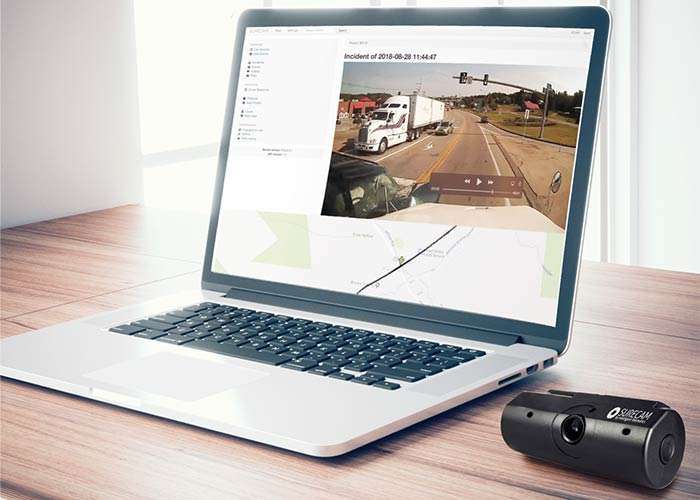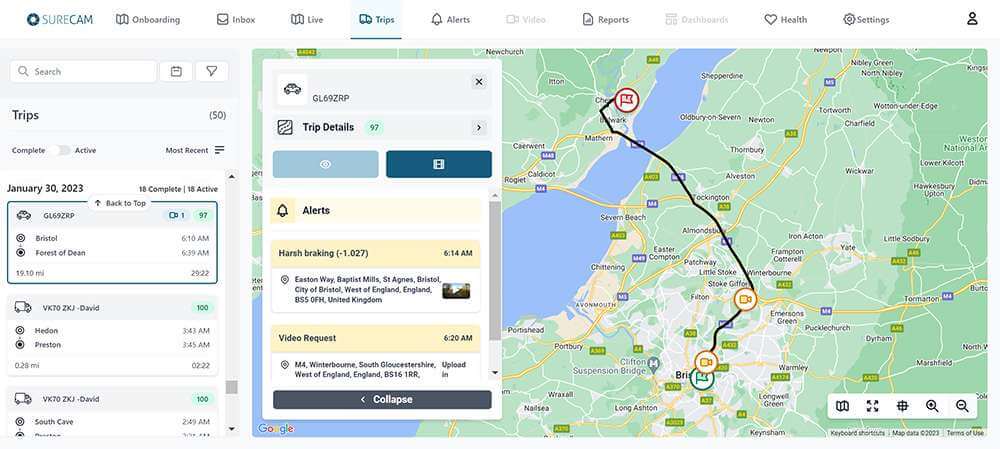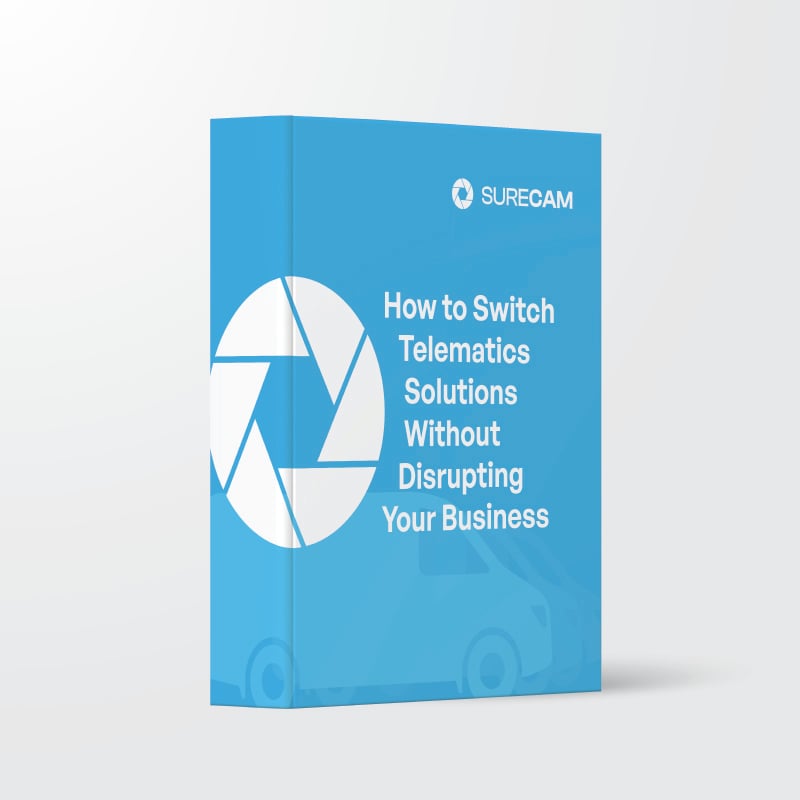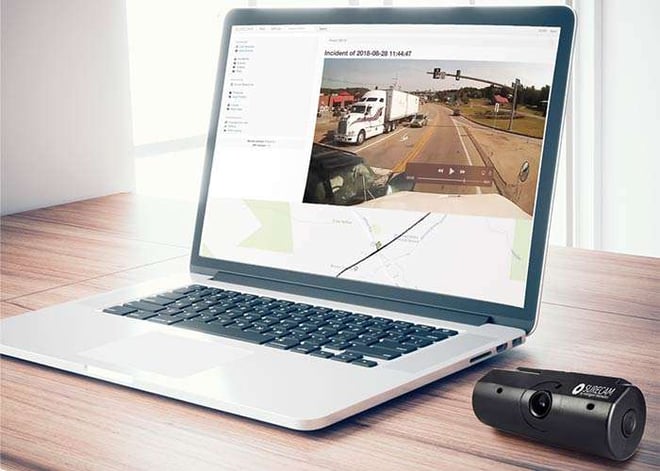Types of Dash Cams for Trucks

Dash Cams for Trucks: Are They Right For You?
Dash cams have been one of the industry’s primary incident reduction tools for years. They’re an effective and reliable way to make sure that your fleet is protected from false insurance claims. Whether you’re seeking to implement a new dash cam program or you’re interested in how you can optimize your current system, we can help you make the best choice for your fleet. Dash cam technology is ever-evolving, so keeping up on the wide variety of data storage and camera types available can help you create a system that meets your needs.
BENEFITS OF DASH CAMS
Dash cameras for trucks can provide many unique benefits. Aside from ensuring your drivers are safe and sound, dash cams have the potential to help you control your insurance costs. Plus, up-to-the-minute metrics for each driver can help you customize your training objectives. If you’re just beginning to research the benefits of dash cams, the sheer number of choices available to you can seem daunting. There are pros and cons to each type of dash cam, so it’s important that the provider you choose lets you customize your system.
Dash Cam Types
SD CAMERAS
First, you’ll need to decide on the hardware. There are two main types of dash cam systems: SD cams and network-connected cams. SD cams use physical media, meaning that your access to the footage depends on the driver. He or she must remember to remove the card, transfer the data off of the card, and reinstall the card properly. And despite the driver’s best efforts, cards can be lost or damaged during this process. Plus, SD camera systems frequently require costly professional installation and maintenance.
CONNECTED CAMERAS
However, with connected dash cams, the data is sent wirelessly to the cloud. Connected cameras use the cellular network, which gives you the ability to access live video and data. Network-connected dash cameras operate in the background automatically. This means your drivers won’t have to incorporate anything new into their everyday routines. Many connected camera systems, including SureCam, allow you to independently install and customize each dash camera’s positioning and settings, too. This helps to cut down on setup fees, and gives you control from the start.
Though both SD and connected dash cams can be helpful in the insurance claims process, connected dash cams have the advantage of allowing you to get out in front of the process much more quickly than systems using SD storage. Since wireless dash cams are connected to the cellular network, you can have video and data within seconds. In the event of an incident, wireless systems give you the ability to get the footage you need right away. Incidents captured by SD camera systems must first be downloaded and reviewed, which can take anywhere from 12-24 hours. Connected cams give you the chance to shut down false claims fast.

If an incident does occur, it’s vital that your dash cam system provides clear footage. Since SD cameras rely on physical media, there is a limited amount of data storage available. When you’re working with limited storage, you’ve got to choose between two options: video quality or video quantity. This means that if you choose to record a driver’s full route, image quality may suffer. But if you choose better image quality, you may not be able to record his or her entire shift. Connected dash cams give you the best of both worlds: clarity and efficiency. Connected dash cameras have the potential to offer you as much storage as you need since this type of system uses cloud-based storage.
In addition to providing reliable incident footage, connected cams give you the chance to be proactive about driver safety. Network-connected truck cams incorporate an accelerometer, which lets you set custom triggers that detect risky driving. You can get relevant, timely notifications about the harsh driving behaviors that matter to you. Fully-managed SD cam solutions simply aren’t able to match the immediacy of connected cams. The accelerometer does the work for you, automatically sending you just the relevant footage. With connected dash cams, you don’t have to wait for–or pay for–fully-managed service.
EXTERNAL CAMERAS
Once you’ve chosen the type of storage that’s best for your fleet, you have another important choice to make. What type of visuals will be most useful to you? External, internal, front-facing, dual-facing, in-cab? Each type of camera provides you with its own unique set of benefits. Internal cameras can be front-facing only, or dual-facing. Front-facing cameras do just that: face front. They record whatever happens to be in front of the truck, without any audio. Dual-facing cameras incorporate both a front-facing camera and an in-cab camera. In-cab cameras record visual and audio from the interior of the driver’s cab. The installation of this type of dash cam has been shown to reduce risky driver behaviors dramatically.
External cameras can be mounted in many different areas on trucks, but the most popular type of external camera is the reverse view camera. This type of visual can help drivers increase accuracy and avoid damage when backing up. It can also provide valuable proof in the event of an incident. Some companies, including SureCam, are developing solutions for exterior multi-cam systems that can be incorporated into existing camera systems.
CAMERAS FOR TRUCKS
Every fleet’s needs are different, so it’s crucial that the provider you choose allows you to customize your plan. Whether you’re interested in implementing a fully-managed, cloud-based dash cam solution or simply augmenting your existing system with cutting-edge technology, SureCam can help.
From first steps to support, our product specialists can guide you toward the type of dash cam solution that will best fit your fleet .

Book a demo today!
SureCam offers GPS vehicle tracking, live video, and real-time alerts for efficient fleet management. Get a Demo



